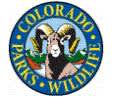Drought will Complicate Pheasant and Quail Hunting in Eastern Colorado
OutdoorHub 11.08.12

Bird hunters will continue to work hard in 2012, as the pheasant and quail seasons open Nov. 10. Due to widespread drought, many brood areas were negatively affected, while those close to irrigated cropland succeeded, creating a complicated season for those looking for wing-shooting opportunity.
“Populations across the region are much lower than in 2011,” said Ed Gorman, small game manager for Colorado Parks and Wildlife. “This area was stricken by a dry winter in 2011-12, and extreme heat and drought during the primary nesting and brood rearing season in the summer of 2012. Hunters in northeast Colorado will see impacts of drought in the fields this season, in terms of bird numbers and cover availability, but may find better populations of pheasants in the irrigated croplands of the South Platte River valley in 2012.”
Northeast Colorado (including Yuma, Phillips, Sedgwick, Logan, Washington, Morgan and SE Weld Counties) experienced a very early spring, yielding good nesting conditions. However, brood habitat was nearly non-existent except in areas with irrigated cropland. Reports of hens with no broods or only one or two chicks were common during an early wheat harvest. The severe drought condition resulted in Emergency Haying and Grazing authorization by the United States Department of Agriculture’s Conservation Reserve Program (CRP) lands in mid July, further reducing habitat on the landscape. Drought conditions did not recede during the late summer period, resulting in little re-growth of CRP and scarce weed growth in wheat stubble fields.
The South Platte River corridor (eastern Morgan, Washington, Logan, Sedgwick Counties) appears to have improved bobwhite quail populations over 2011. This year is the second season since flooding, which generally improves quail habitat. Hunters should expect less cover within the river itself due to drought, but there are some indications that quail numbers are better than the last few years.
Hunters in east central Colorado (Southern Yuma, Kit Carson, Cheyenne, Kiowa Counties) face much lower populations than in 2011, due to the scorching dryness and vast amounts of haying and grazing of CRP, severely reducing the amount of available habitat. Pheasant densities will increase within the areas that provide sprinkler irrigation fields. Expect populations to be at least 50 percent lower, at a minimum, than in 2011.
It’s important to note that many WIA areas in Kiowa County are enrolled primarily for light goose hunting, including some fields that offer little cover for pheasants and quail. Quail populations are present within the extreme southern reaches of this area, whereas few bobwhites or scaled quail exist in the northern counties of Kit Carson and Cheyenne.
Finally, hunting in the extreme southeast Colorado counties (Baca & Prowers Counties) could provide opportunity due to nearly normal precipitation in some areas. Haying and grazing of CRP lands within the area was very common during the summer of 2012. Expect that pheasant populations to be higher in areas with sprinkler irrigation systems.
Quail populations in the extreme southeast may be slightly higher than in 2011, although both bobwhites and scaled quail were reduced by the severe winter of 2006-07 and by a drastically dry 2008 and 2010. The degree of recovery is difficult to assess at this point, although the general feeling is that quail populations are still low in the area, with very small areas that are better than expected.
Colorado’s pheasant and quail seasons open one-half hour before sunrise on Saturday, Nov. 10. The seasons run through Jan. 31, 2013 east of I-25. Hunters must have a Colorado small game license and must have completed hunter education to participate in the seasons.
Small-game hunters in Colorado are also required to register for the Harvest Information Program (HIP) before hunting. Hunters can register and receive a HIP number by going on-line to http://www.colohip.com or by calling toll-free at 866-COLO-HIP (866-265-6447).
Hunters take note:
Due to the severe drought, wildfire danger is very high. Please do not park on or drive through vegetation. Refrain from smoking while in the field. Also note that WIA sprinkler corners are closed to WIA hunting when the landowner is harvesting the associated crop. This closure is in effect to allow harvesters to work efficiently, and to minimize safety concerns for hunters and harvesters. Corners are posted with closure signs in addition to WIA boundary signs.
Colorado Parks and Wildlife manages 42 state parks, more than 300 state wildlife areas, all of Colorado’s wildlife, and a variety of outdoor recreation. For more information go to www.cpw.state.co.us.

